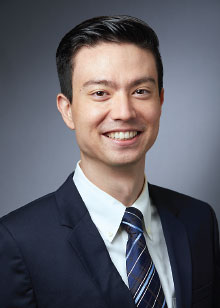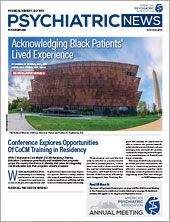Psychiatrists must be prepared to answer their patients’ questions about psychedelics, even as the research and legal landscapes surrounding therapeutic use are constantly evolving. In a packed session at APA’s 2023 Annual Meeting, experts and researchers provided an overview of the state of psychedelics research and offered concrete talking points that psychiatrists can use in their discussions about psychedelics with patients.
“Folks tend to lump a lot of different psychedelics into the same black box,” said Aaron Wolfgang, M.D., an assistant professor adjunct of psychiatry at Yale University. “[People] who have never taken a psychedelic may have assumptions based on what they know of 1960s and 1970s counterculture. But psychedelics are all actually quite different.”
Wolfgang said that psychiatrists need to look at the therapeutic effects of psychedelics as they would the psychoactive medications they use to treat patients. “[J]ust as an SSRI is going to be quite different from an MAOI, MDMA is going to be quite different from psilocybin or ibogaine.”
Nolan Williams, M.D., an associate professor in the Department of Psychiatry and Behavioral Sciences and the director of the Stanford Brain Stimulation Lab at Stanford University, discussed the findings of an open-label trial of ibogaine and magnesium in veterans with a history of traumatic brain injury. (Magnesium was included for its heart-stabilizing effects.)
The patients were evaluated using standardized measurements for posttraumatic stress disorder (PTSD), depression, anxiety, executive function, and cognition. They then received the ibogaine-magnesium medication in oral form during a therapeutic session. One month after treatment, 80% of the patients were within the healthy range on all three scales. Six months after treatment, more than 80% were within the healthy range for PTSD and anxiety, and more than 70% were within the healthy range for depression.
Williams said that the patients also experienced a reduction in the severity of “moral injury” sustained during combat.
“These are injuries such as accidentally shooting a civilian when [the soldiers] meant to shoot the enemy or leaving a friend on the battlefield,” Williams explained. “We saw a statistically significant reduction of moral injury and suicidal ideation, as well as improvements in executive function. … We also observed increases in cortical thickness in key areas of the brain involved in mood regulation.”
Bryan Barksdale, M.D., Ph.D., a PGY-3 resident at the University of Texas at Austin, provided an overview of dimethyltryptamine (DMT), which is found in plants such as ayahuasca that are used in traditional medicine by Indigenous people; LSD; and psilocybin. He noted that these psychedelics may interact with the psychotropic medications that patients may be taking. For example, these substances interact with serotonin receptors in the body and may therefore interact with SSRIs.
“There’s also a theoretical risk of serotonin syndrome. It’s rare …, but it’s something that we should be able to counsel patients about,” Barksdale said. He added that with all psychedelics, there is the potential for difficult emotional experiences and, while rare, persistent changes in perception.
Barksdale emphasized the importance of counseling patients who may be at risk for adverse psychiatric events during psychedelic use.
“For people with predispositions like family history of bipolar disorder or a primary psychotic disorder, [psychedelic use] can potentially exacerbate or trigger one of those disorders. We should make sure to counsel these patients so they can make informed decisions.”
Wolfgang rounded out the session with a discussion of harm reduction. He reflected on a potential surge in demand for psychedelics should the U.S. Food and Drug Administration approve psychedelics such as MDMA and psilocybin.
“Access to these treatments is going to be limited because they are highly resource intensive,” Wolfgang said. He noted the need for trained medical and mental health professionals as well as appropriate settings to offer these treatments.
“It’s the responsibility of every single person in this room to help patients understand [the risks of illicit psychedelic use] and help redirect them to legal settings such as clinical trials,” Wolfgang said. “It’s not often, but people do die when they use these substances in recreational [or other illegal] settings, particularly when they’re combined with other substances.” He added that when psychedelics are adulterated, the added ingredients are most often opioids.
Wolfgang acknowledged that some patients will seek out illegal psychedelics even after psychiatrists counsel them on the risks. To that end, he encouraged psychiatrists to talk with their patients about the following:
•
Using testing kits to make sure the compounds they are about to take are not adulterated with other substances.
•
Having other people, informally known as “sitters,” present when they take the psychedelics.
•
Having naloxone available in the event a psychedelic is contaminated with opioids so that others present may revive the patient. ■

